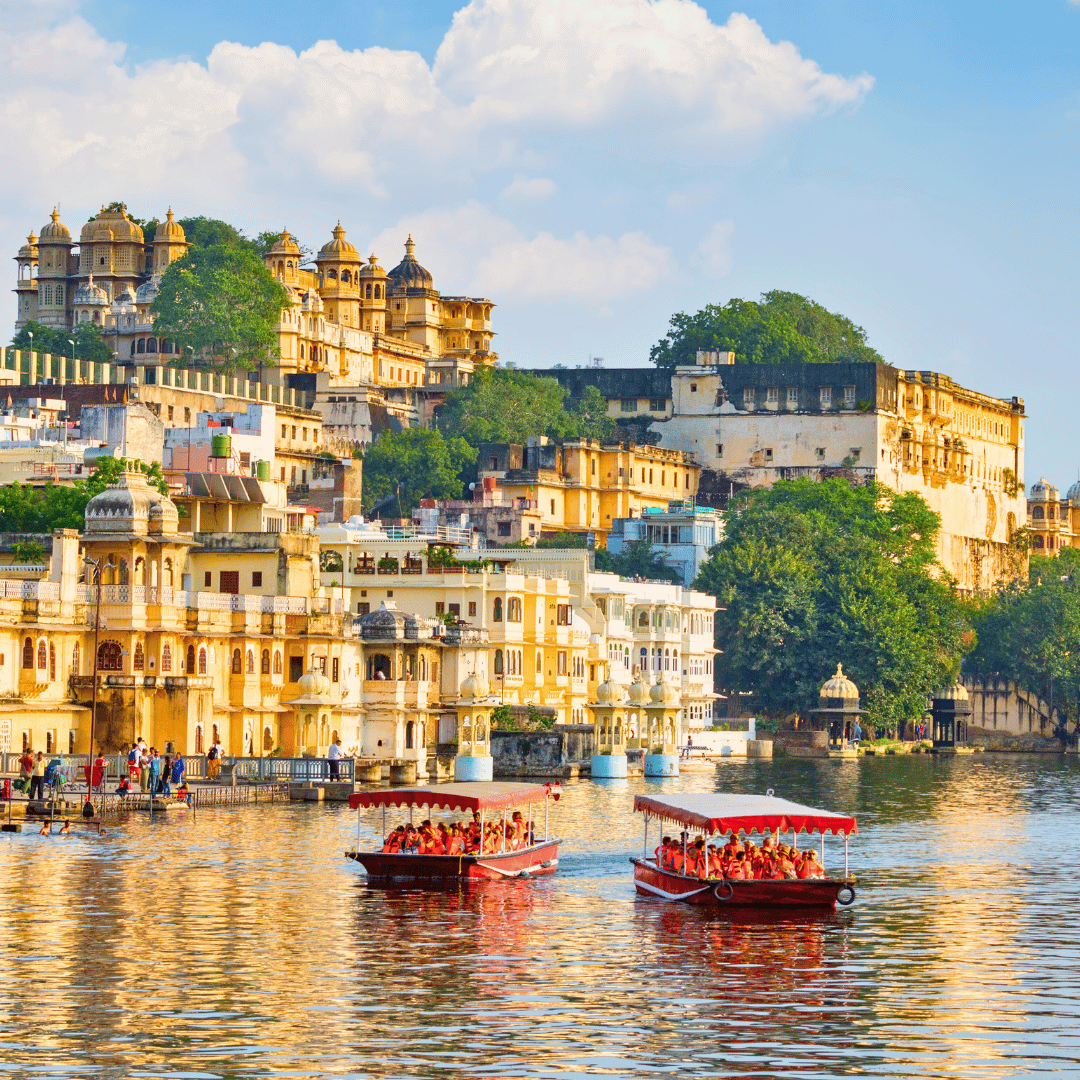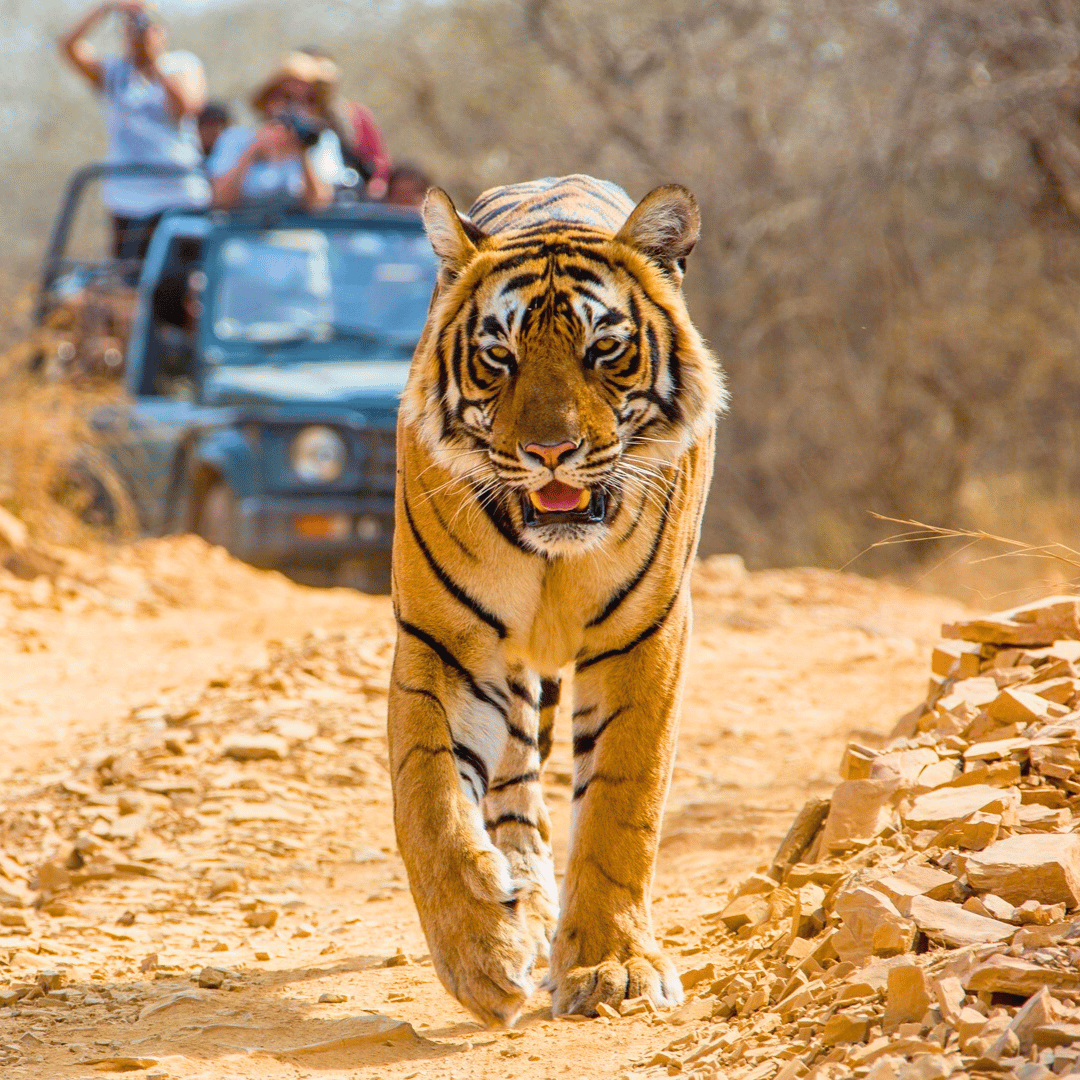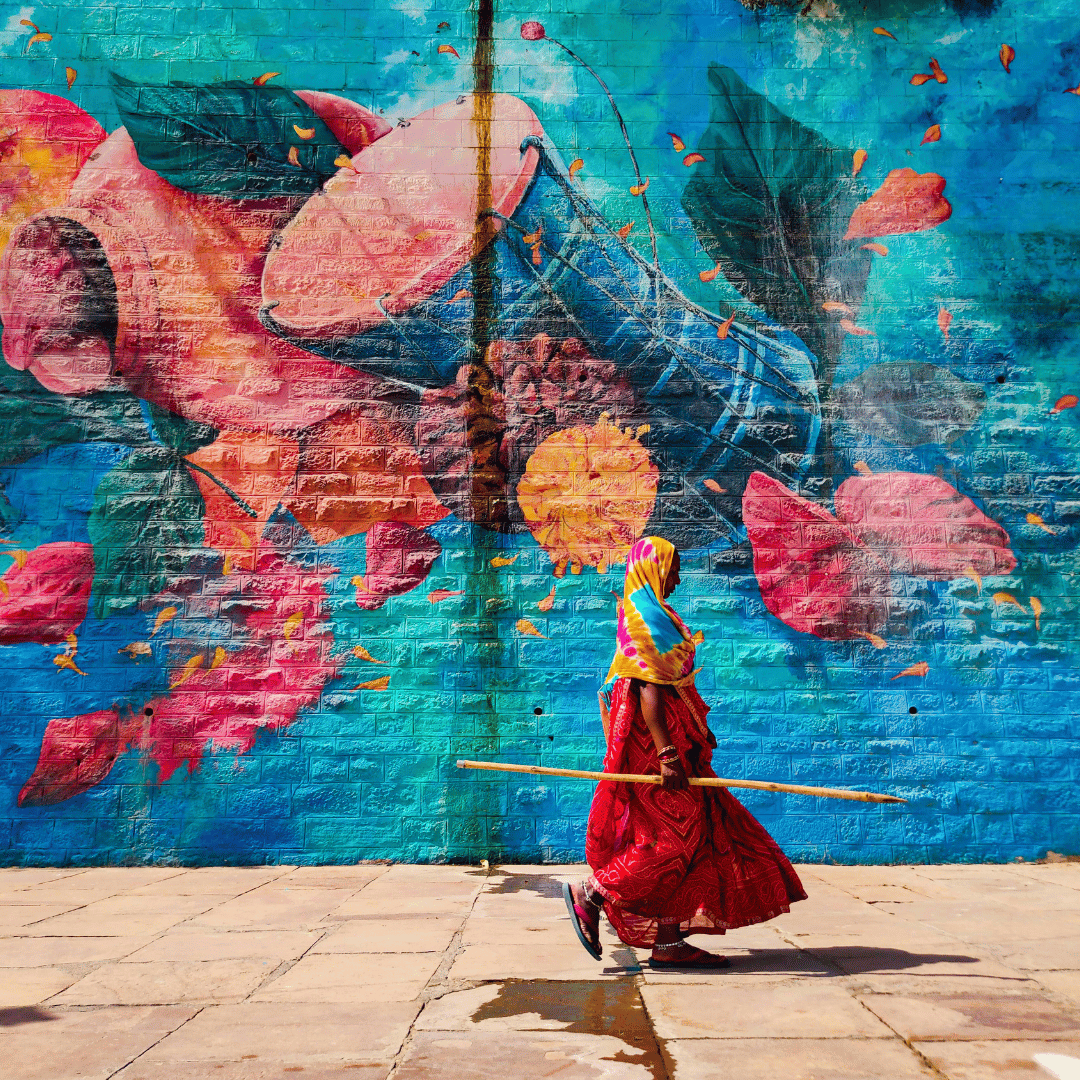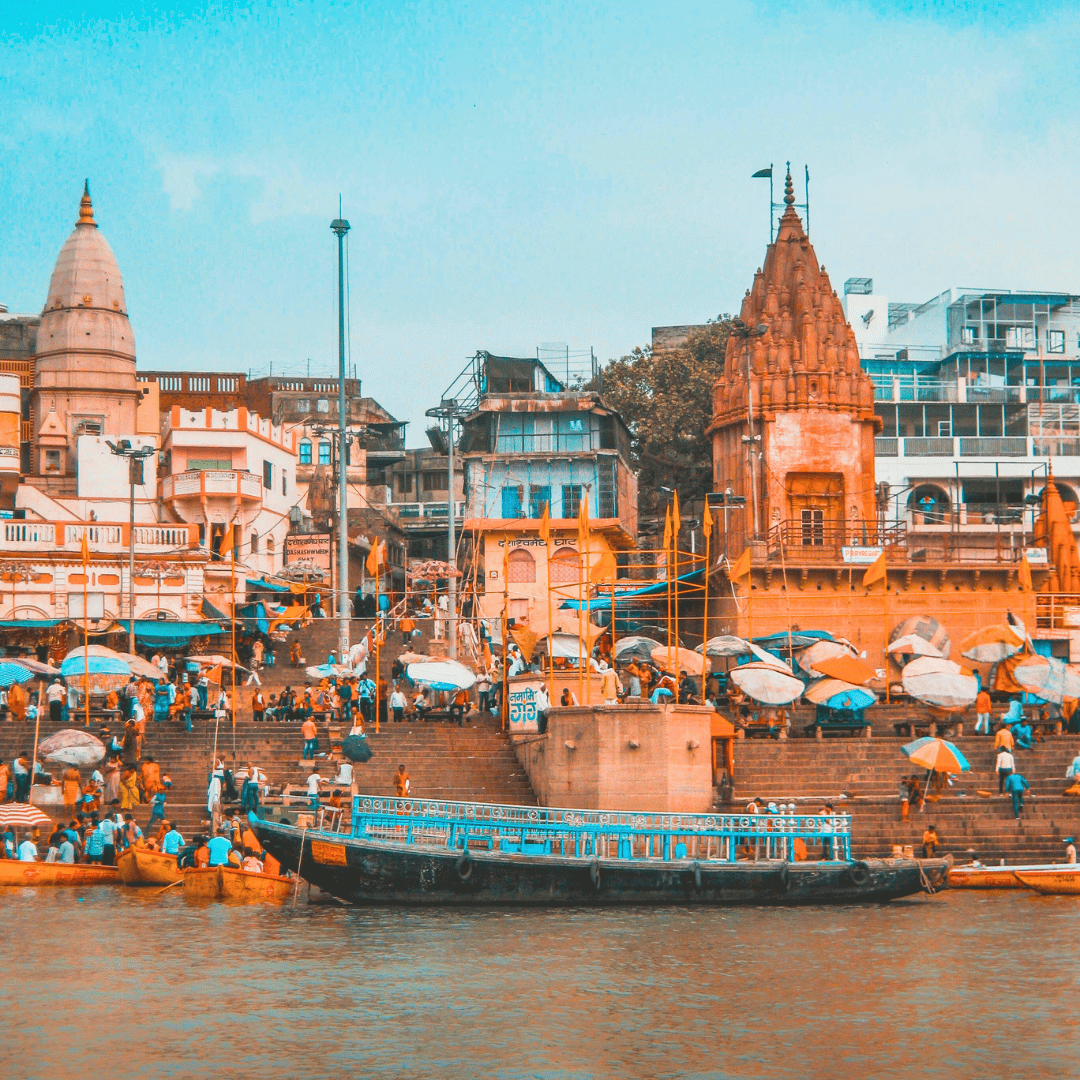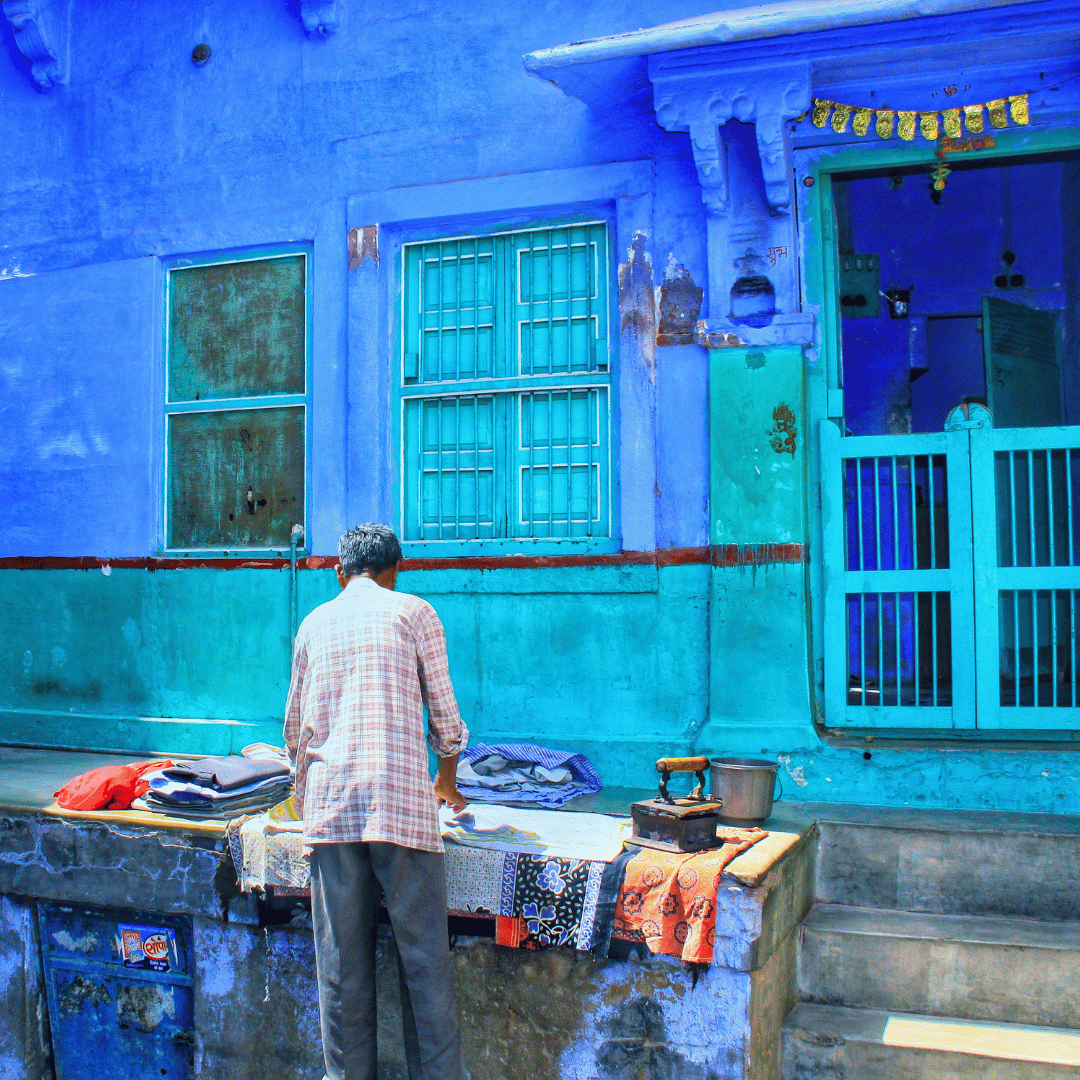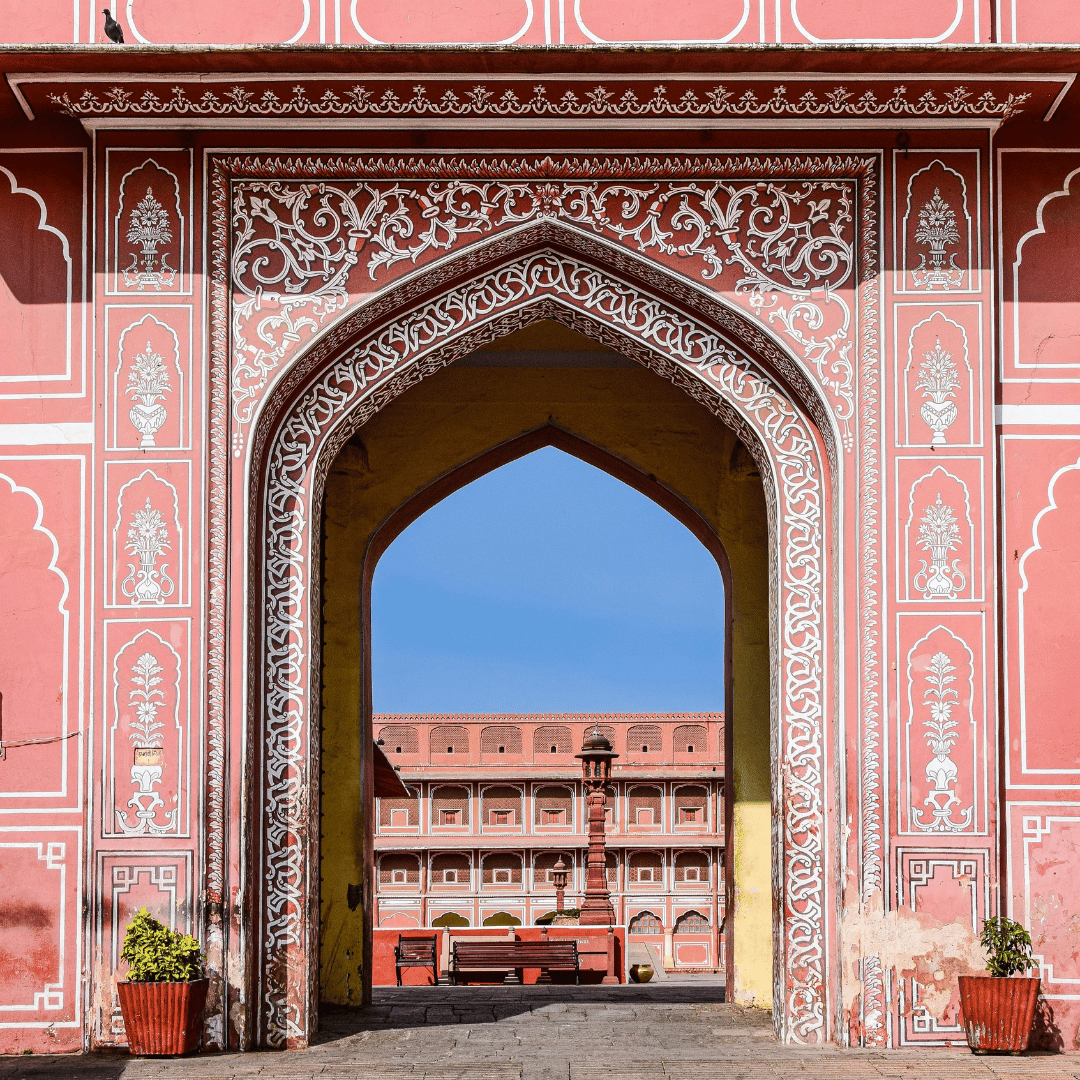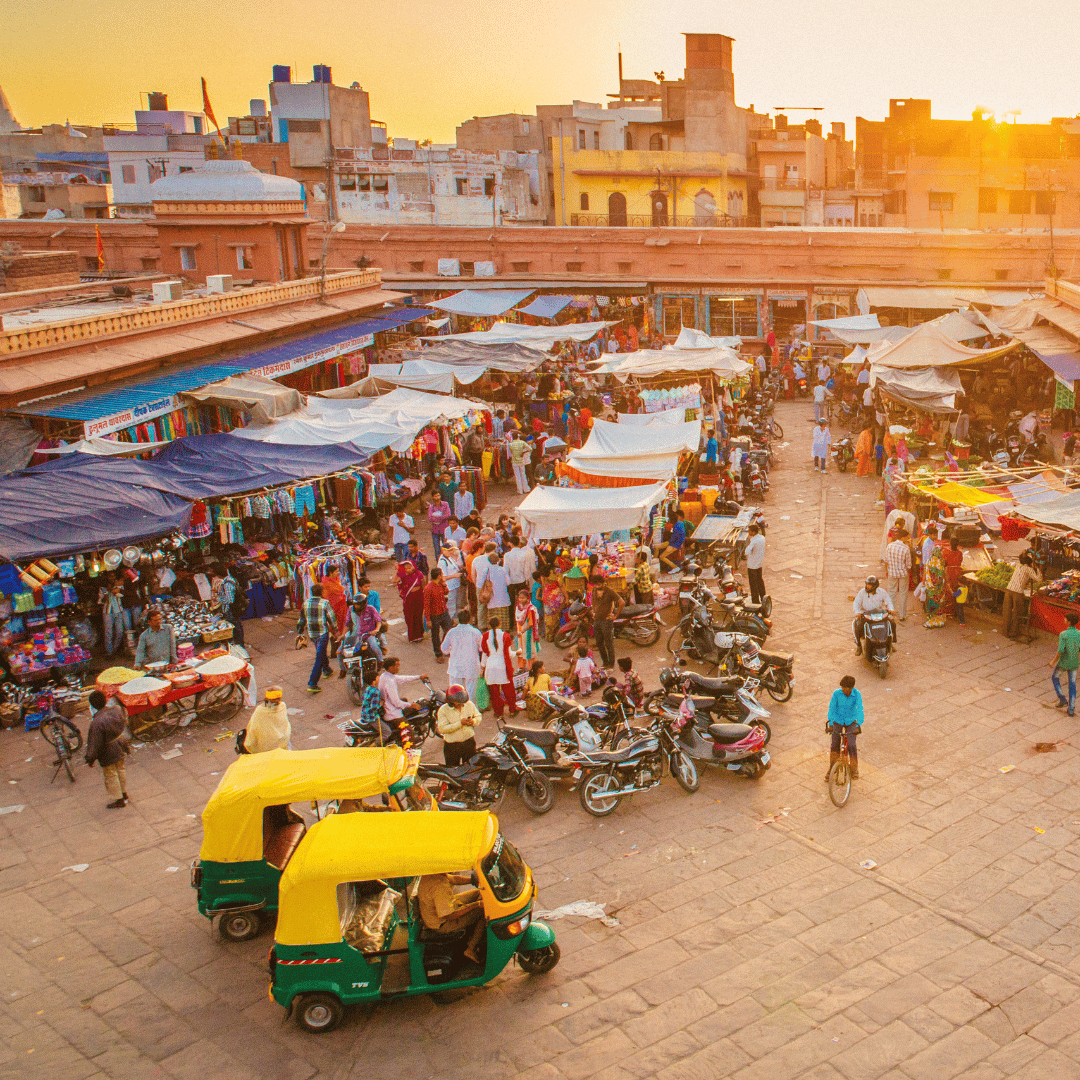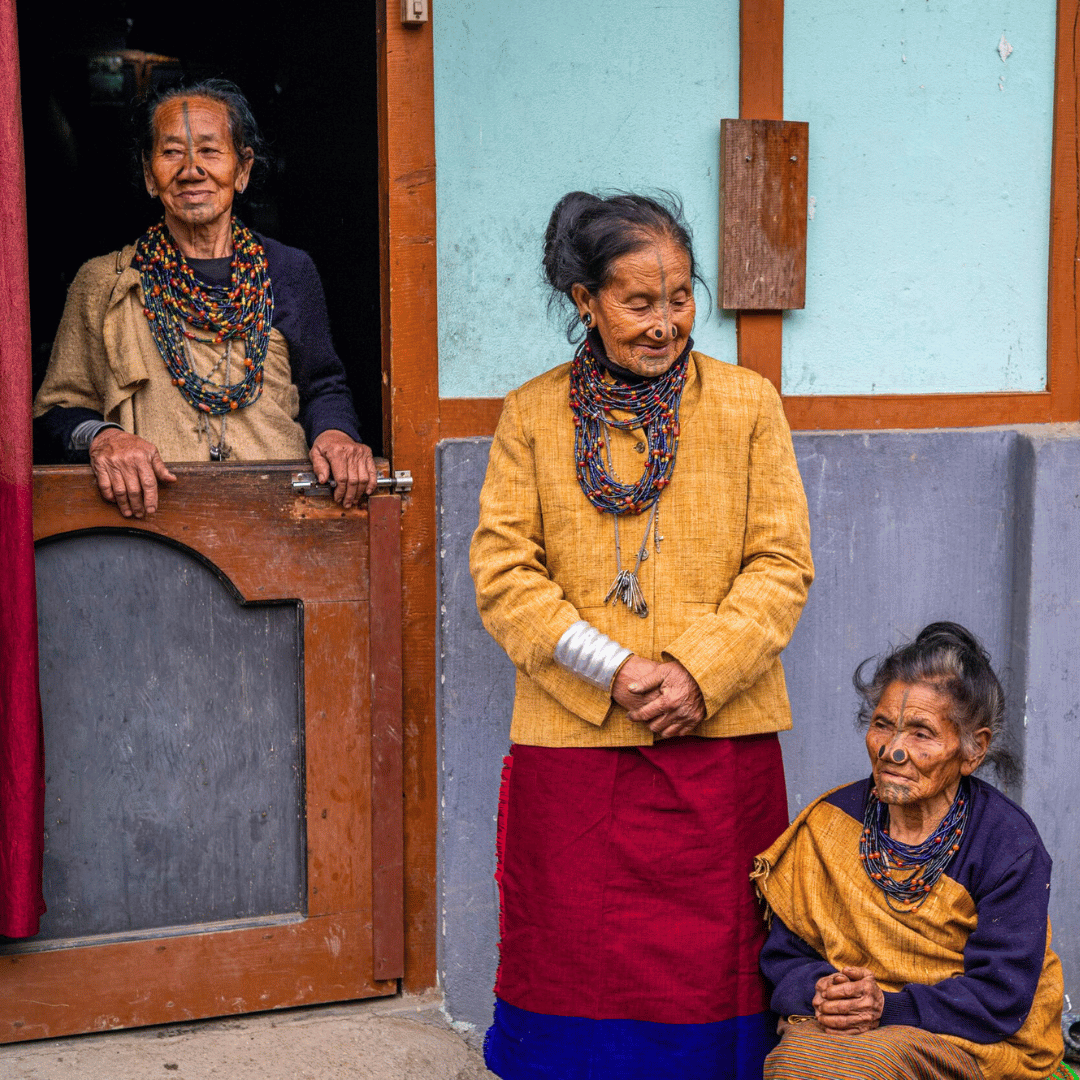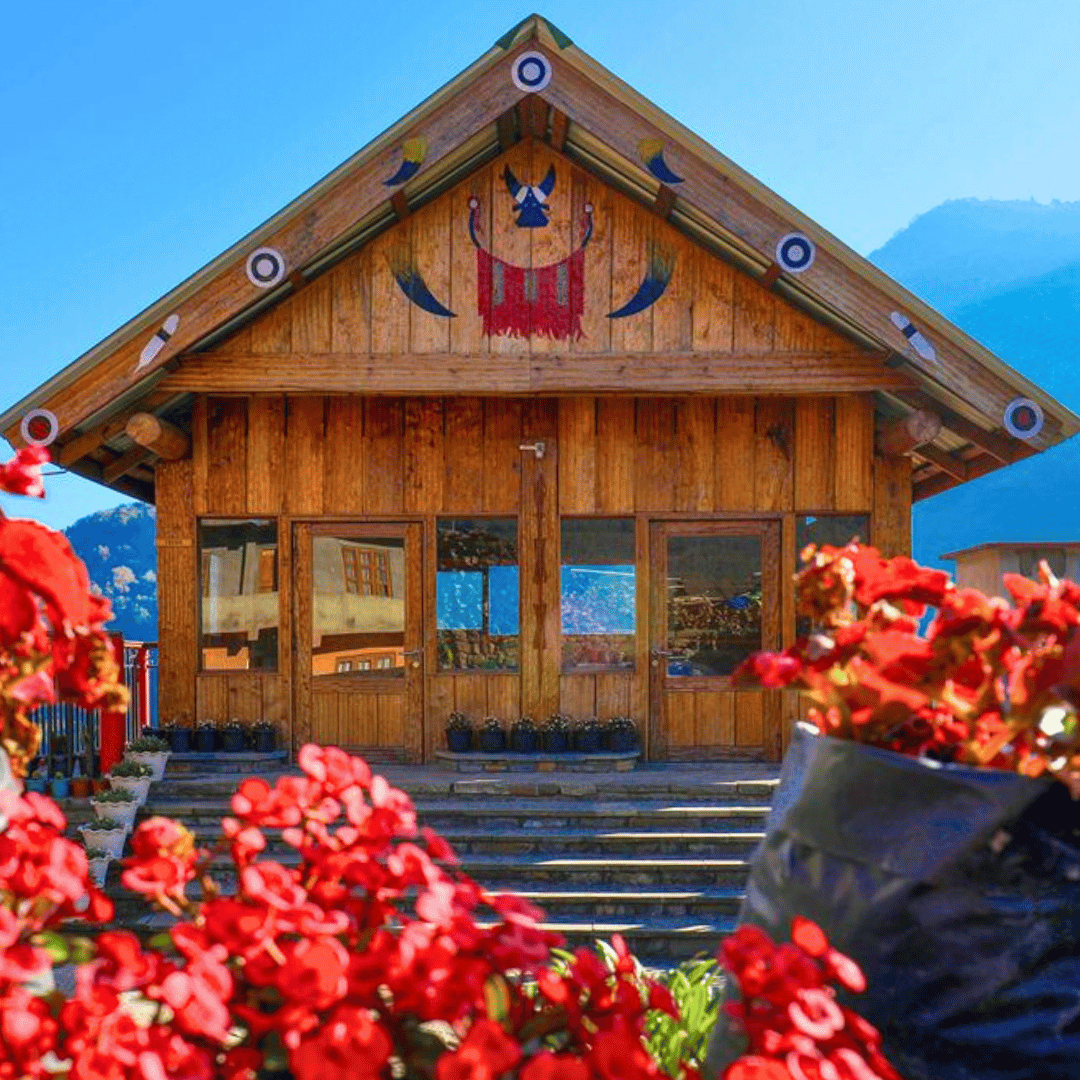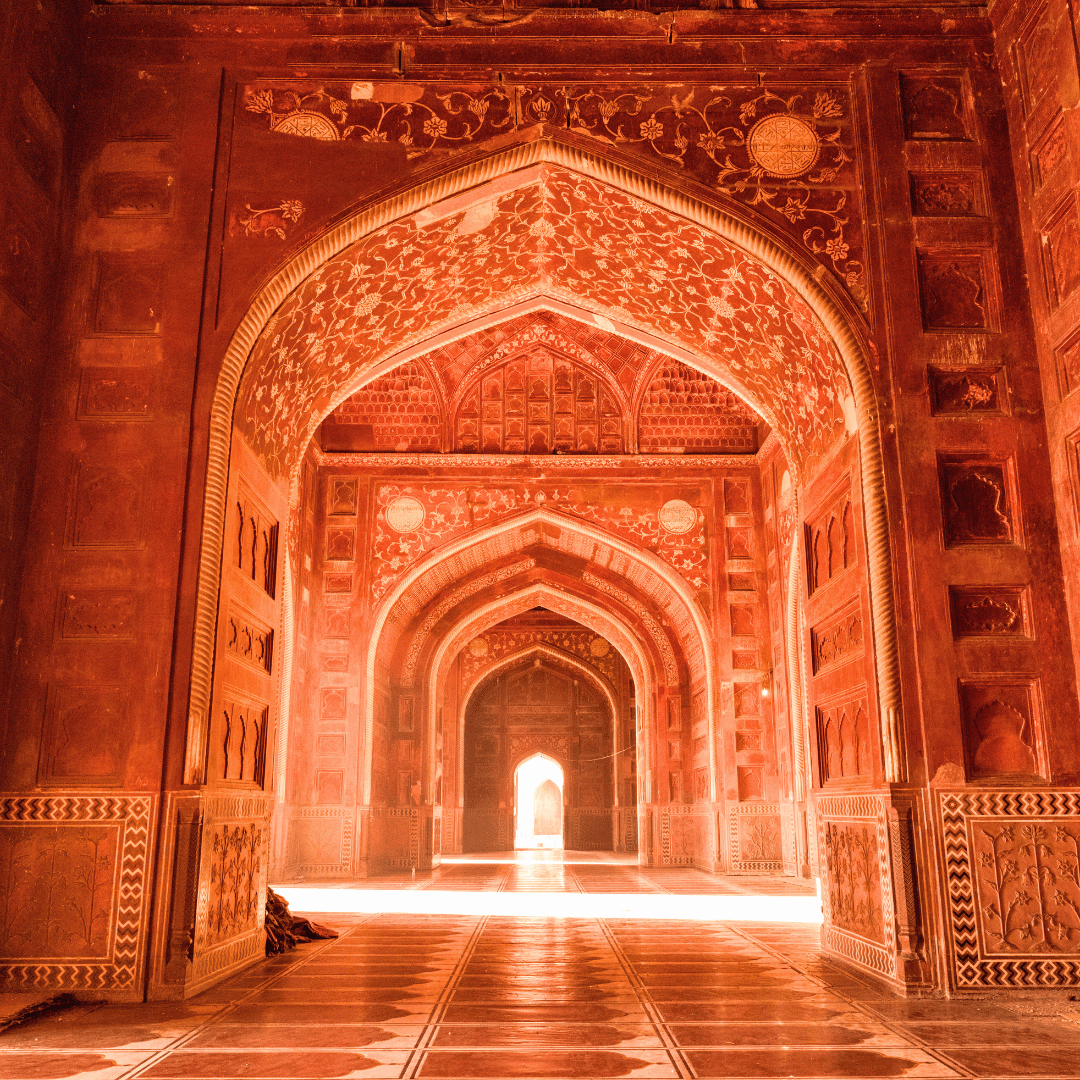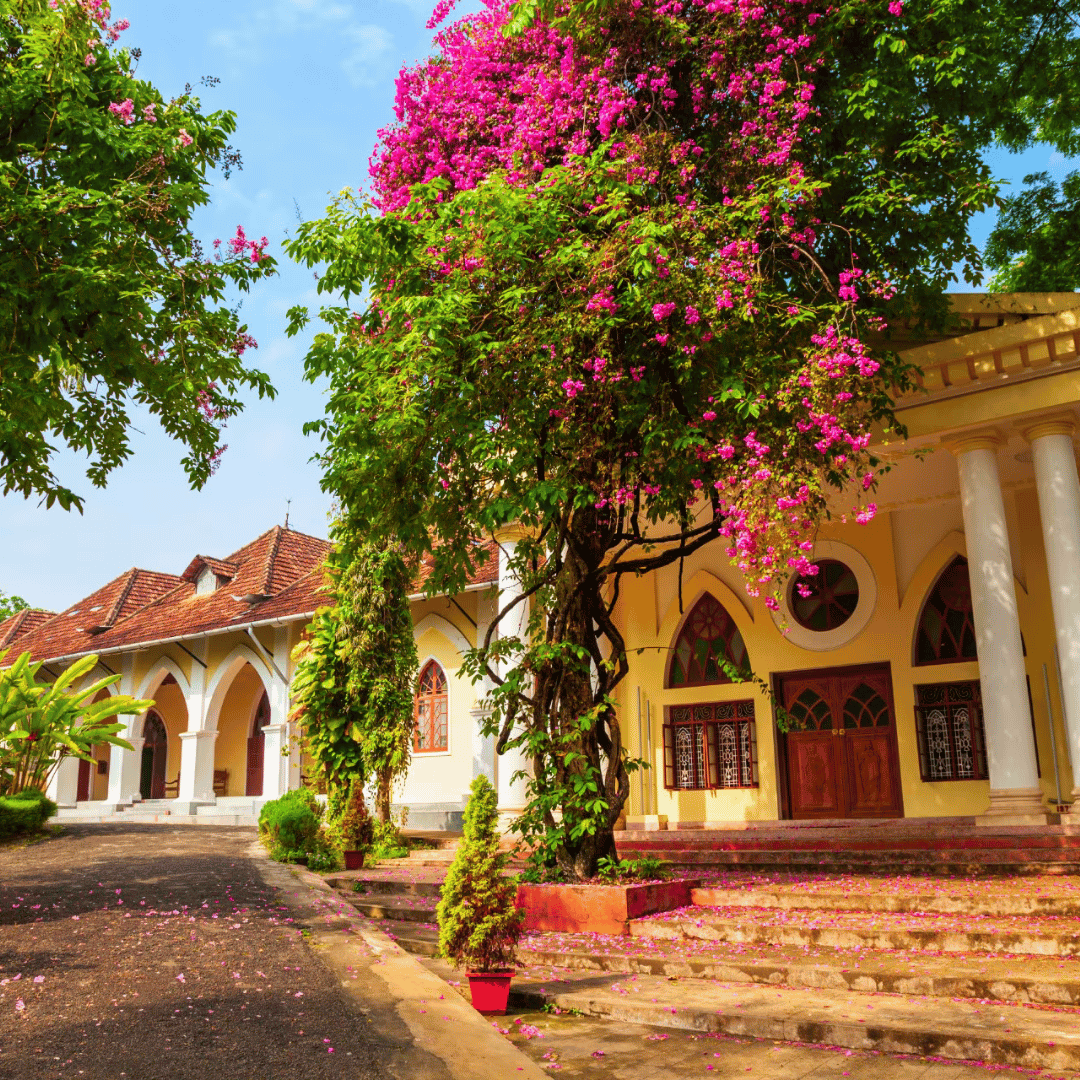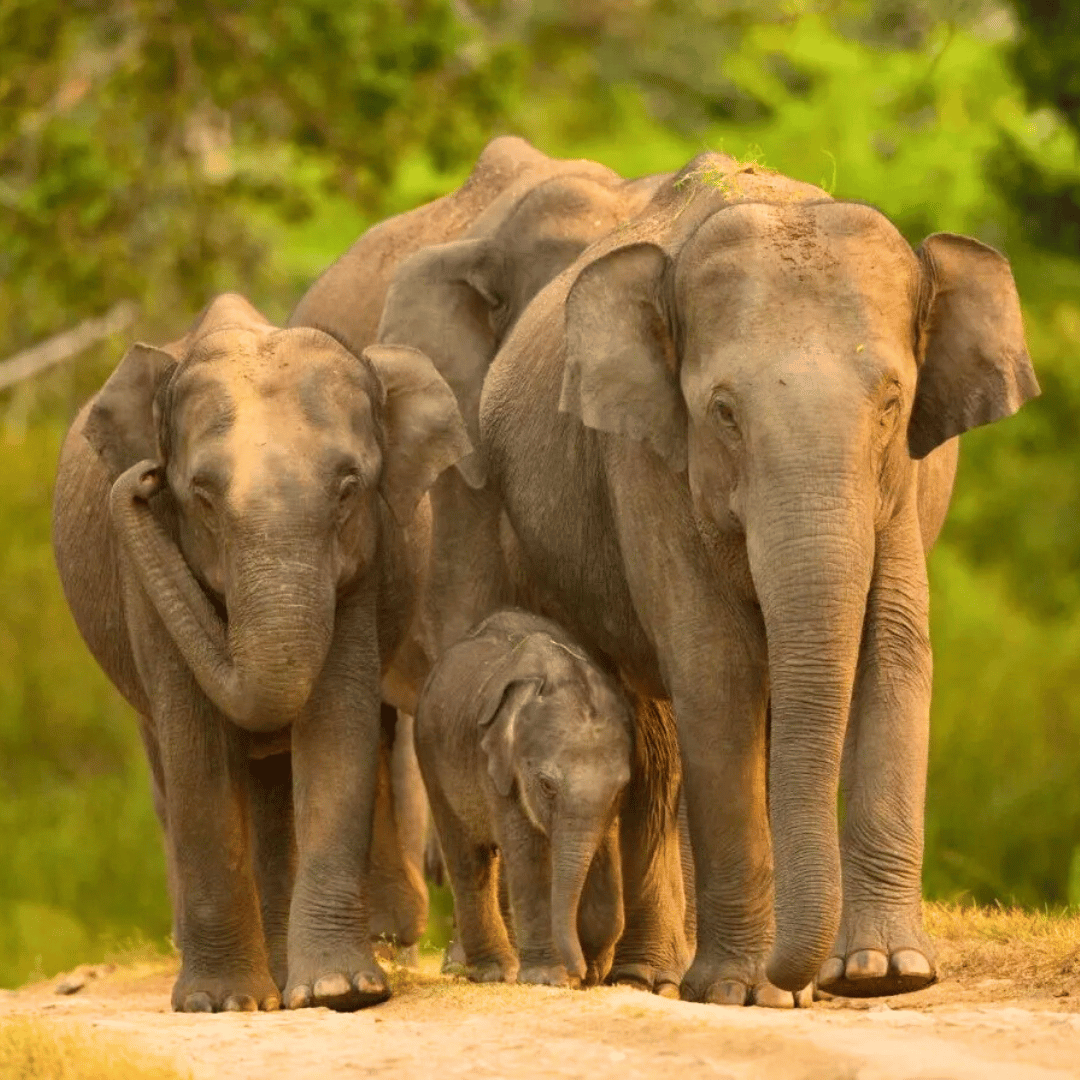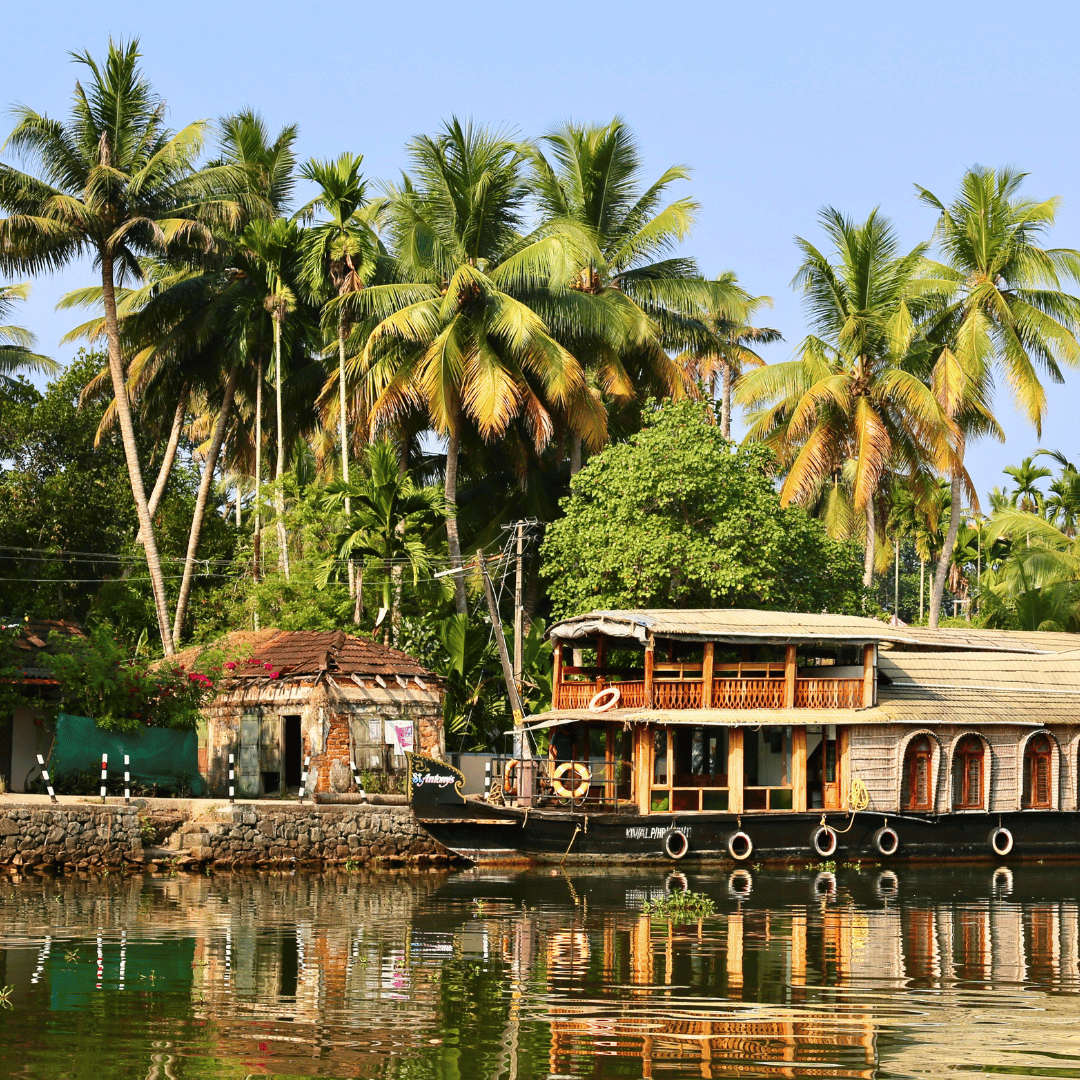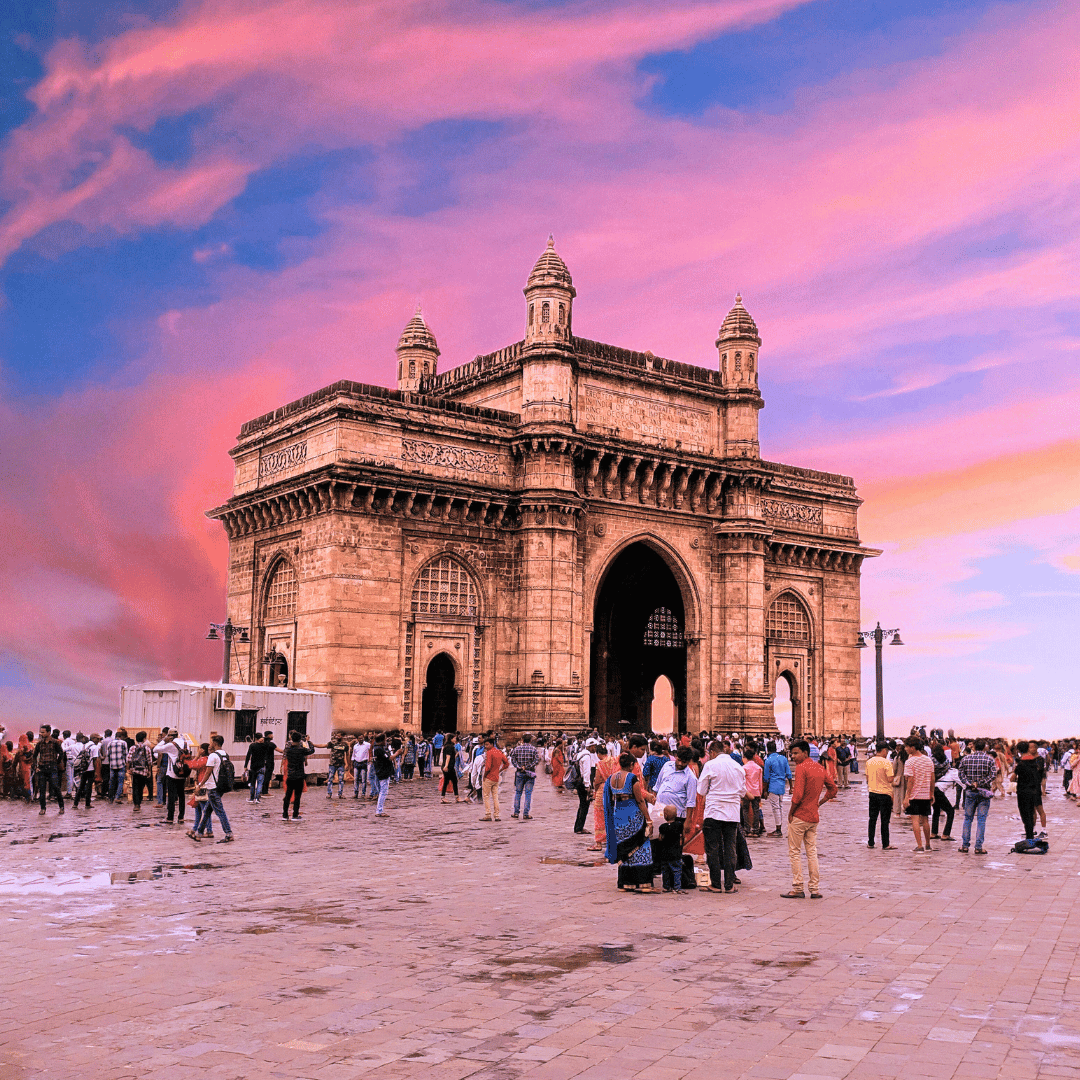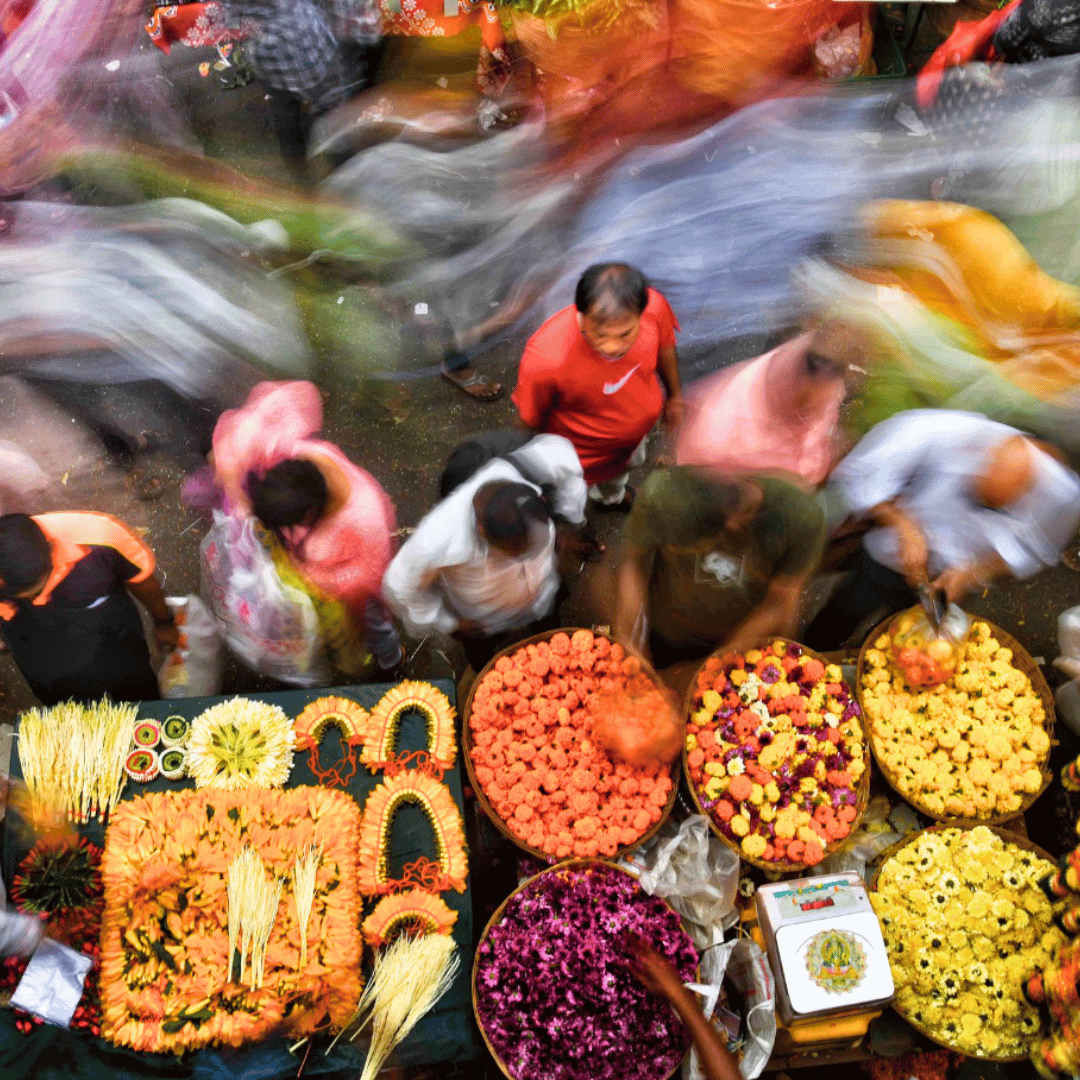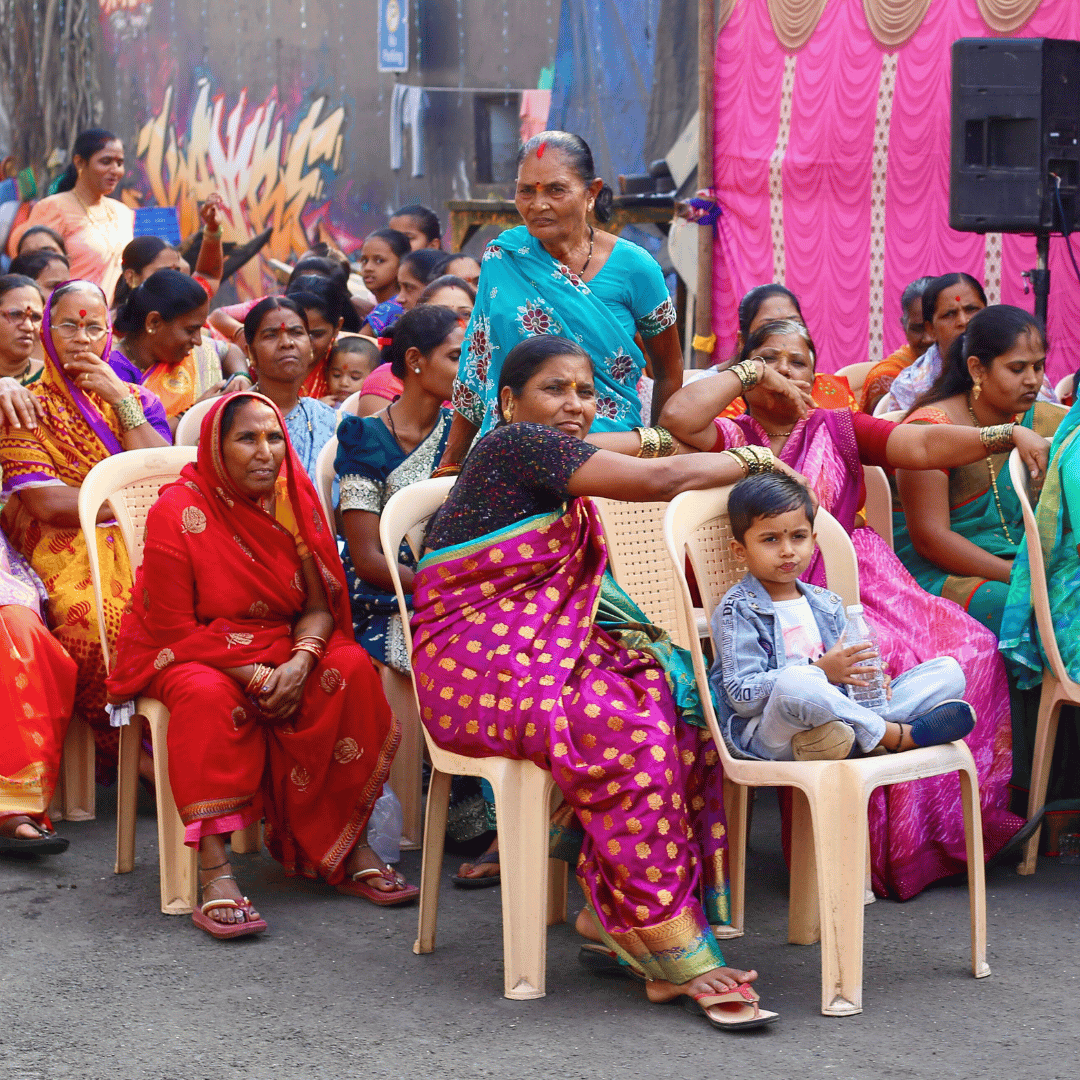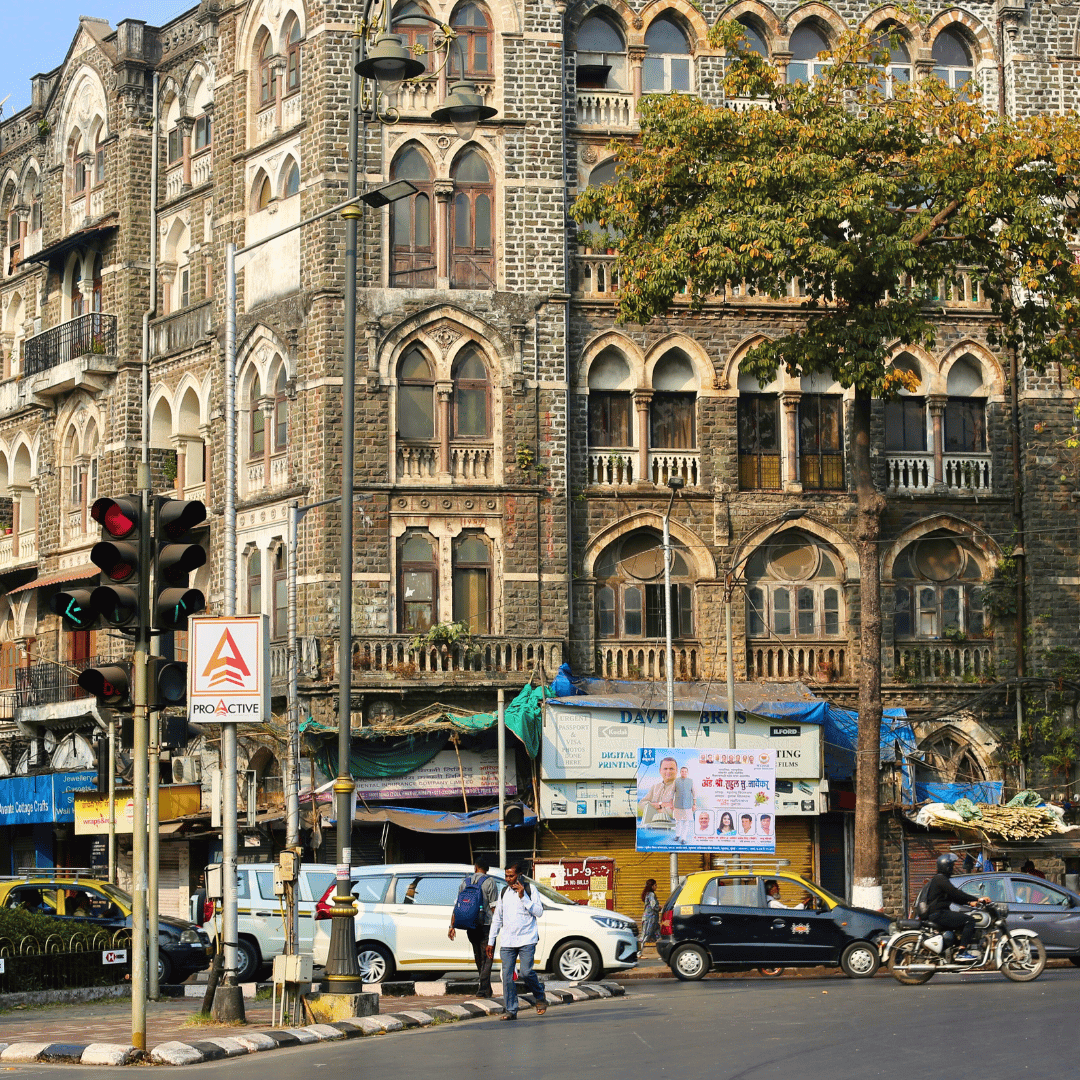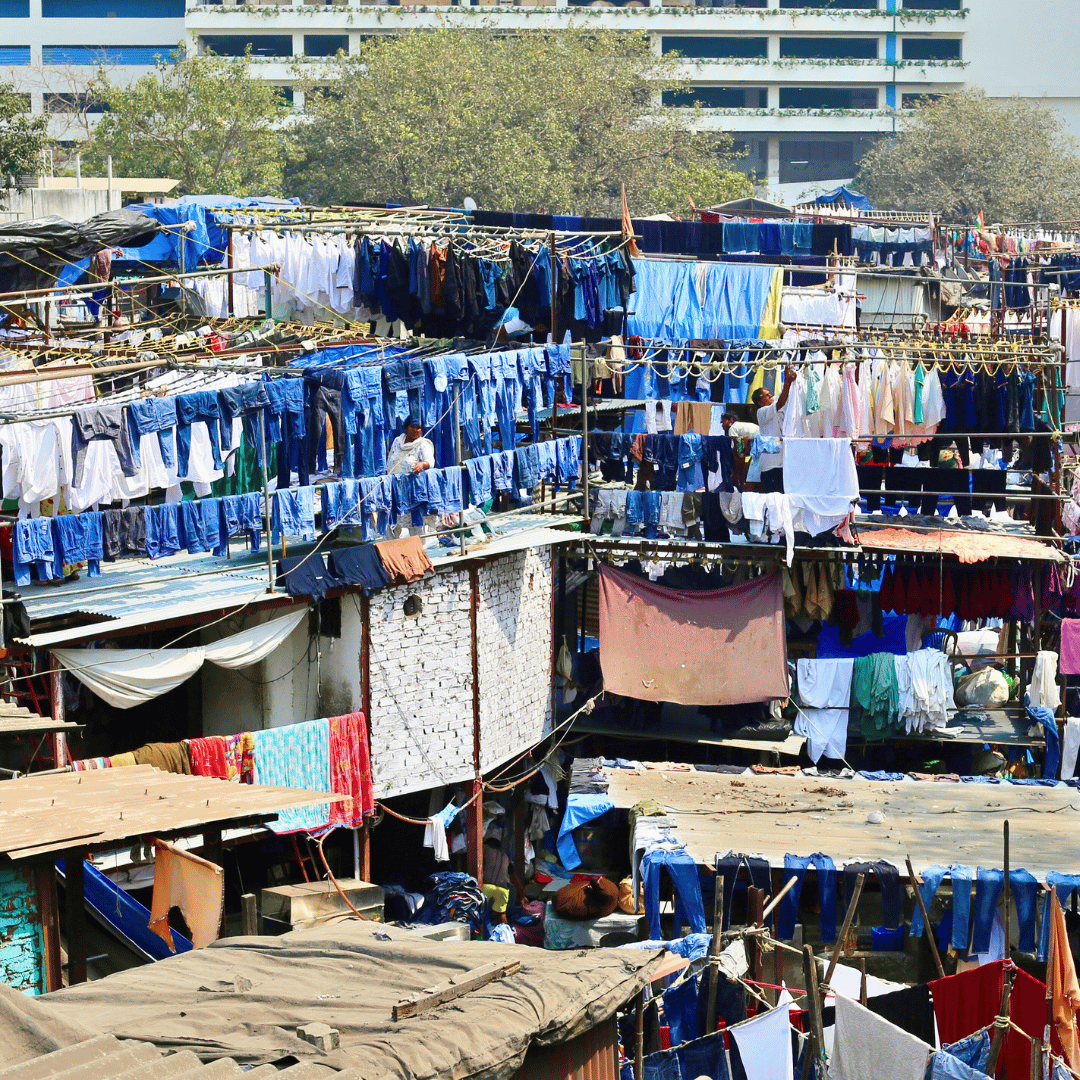North India In Depth Tour Itinerary
-
Welcome to India! You will be met on arrival in Mumbai and transferred to your hotel. Often referred to as India’s ‘Maximum City’, Mumbai is a place of striking contrasts, where modern India and its older traditions coexist in close and often unexpected ways. It is the country’s commercial and financial hub, generating a significant share of India’s trade and investment activity, while also serving as the heart of its film industry - the globally recognised and prolific world of Bollywood.
Mumbai’s skyline reflects its dual character. Sleek, glass-fronted towers rise alongside grand colonial-era buildings, many dating back to the British Raj and designed in Gothic, Victorian and Indo-Saracenic styles. The city’s religious diversity is equally visible, with Hindu temples, Jain derasars, Parsi fire temples, mosques, synagogues and churches scattered across its neighbourhoods.
Daily life unfolds in a rich mix of settings - from air-conditioned shopping centres and stylish cafés to narrow lanes filled with market stalls, roadside vendors and age-old trades. Luxury apartments and historic mansions share space with informal settlements and densely populated chawls, where the sense of community runs deep. Mumbai moves at a fast pace, but has many quiet corners and layered stories. Its energy, diversity and sheer scale make it unlike any other city in India.
-
Begin your exploration of Mumbai this morning with a visit to the Mahalaxmi Dhobi Ghat, one of the city’s most iconic and unexpected sights. Operating for over 140 years, this vast open-air laundry is made up of more than 1,000 stone troughs where hundreds of dhobis (washermen) wash, beat and dry clothes in a remarkably organised, if chaotic-looking, system. Watching the rhythm and coordination of work here provides a fascinating glimpse into a vital part of Mumbai’s informal economy.
From there, explore some of Mumbai’s Raj-era landmarks, including the Chhatrapati Shivaji Terminus (formerly Victoria Terminus), an architectural masterpiece and UNESCO World Heritage Site that blends Victorian Gothic with traditional Indian elements. Not far away is the Bombay High Court, another striking example of colonial architecture that still functions as a working court today.
Depending on your interests, there are many other sites worth visiting. St. Thomas’s Cathedral, completed in 1718, is considered Mumbai’s oldest surviving colonial structure and a peaceful place amid the city’s bustle. The Keneseth Eliyahoo Synagogue, painted in striking blue and white, is the oldest Sephardic synagogue in the city and showcases Mumbai’s once-thriving Jewish heritage.
For something less commonly seen, the Art Deco-style Parsi fire temple, Watcha Agiary, is a small but architecturally unique structure influenced by Assyrian design motifs. If the tide is right, a walk out to the Haji Ali Dargah is another highlight. Built in the 15th century and situated on a small islet in Worli Bay, the dazzling white mosque and tomb can only be accessed by a narrow walkway during low tide, making it both a spiritual and visual landmark.
Throughout the day, your guide can tailor the experience to your pace and interests, whether that includes architecture, religion, history or simply taking in the rhythm of this endlessly complex and captivating city.
-
This morning you will be collected from your hotel and transferred to the airport for your flight to Udaipur, often referred to as Rajasthan’s “White City”. On arrival, you’ll be met and transferred to your hotel. Set against the backdrop of the Aravalli Hills and nestled beside the shimmering waters of Lake Pichola, Udaipur is one of Rajasthan’s most picturesque and atmospheric cities.
Founded in 1559 by Maharana Udai Singh II, Udaipur was established as the new capital of the Mewar kingdom after the fall of Chittorgarh. The city is known for its elegant white marble palaces, sunlit courtyards, winding laneways and ornate havelis, many of which are now heritage hotels, museums or family homes. Temples and gardens add to the city’s quiet charm, creating a distinct contrast to the arid landscapes found elsewhere in Rajasthan.
Udaipur’s most recognisable landmark is the Lake Palace, a gleaming marble structure that appears to float on the surface of Lake Pichola. Built in the 18th century as a summer retreat for the Mewar royal family, it is now one of the most photographed buildings in India and often associated with the city’s romantic image.
The gentle pace of life, combined with the beauty of the architecture and the stillness of the lake, gives Udaipur a unique atmosphere - refined, reflective and deeply rooted in its royal heritage. The remainder of the day is at leisure, giving you time to settle in and begin soaking up the ambience of this lakeside city.
-
This morning, set out to explore Udaipur on a guided tour that introduces you to some of the city's most impressive and historically rich landmarks. Begin with the sprawling City Palace complex, built over several centuries by 22 maharanas. It is the largest palace of its kind in Rajasthan and occupies a commanding position overlooking Lake Pichola. The architecture blends Rajasthani and Mughal styles and includes a network of palaces, courtyards, balconies and pavilions that reflect the grandeur of royal life.
Among the many highlights is Mor Chowk, or Peacock Courtyard, where three detailed mosaic peacocks symbolise the seasons. Amar Vilas, in contrast, is a Mughal-style pleasure pavilion with terraced gardens, fountains and ornamental towers. Other notable areas include Zenana Mahal, once the royal women's quarters and now a museum displaying period art and artefacts. Manak Mahal has a raised alcove covered in mirror work. The Sheesh Mahal, or Palace of Mirrors, dates back to 1716. Badi Mahal, built on a natural rock outcrop, features an internal garden and elevated views of the city.
Next, visit Jagdish Temple, one of Udaipur’s most important Hindu temples. Built in 1651 and dedicated to Lord Vishnu, it features a towering shikhara and is richly carved with figures from Hindu mythology, including scenes from the life of Krishna. The temple remains an active site of worship and is an important part of the city's spiritual life.
End your tour at Saheliyon ki Badi, also known as the Garden of the Maids. Created in the 18th century for the women of the royal household, the garden is set beside Fatah Sagar Lake and includes lotus-filled pools, white marble pavilions and fountains shaped like elephants. Water flows through the garden using a gravity-fed system, adding to the sense of calm and quiet. This shaded retreat offers a tranquil conclusion to the day’s exploration and a more intimate look at the lives of those who once lived behind palace walls.
-
This morning you’ll be driven to Deogarh, a journey of around three hours through the scenic landscapes of the Aravalli Hills. Along the way, you’ll stop to visit one of the most remarkable religious sites in India: the Ranakpur Temples. Nestled in a quiet valley, these intricately crafted Jain temples are widely regarded as among the finest examples of temple architecture in the country. Built in the 15th century, the complex is dedicated to Adinatha Rishabdeva, the first of the Jain tirthankaras or “Enlightened Ones”.
The main temple, known as Chaumukha or the Four-Faced Temple, was begun in 1446 and took decades to complete. Made entirely of light-coloured marble, it features an astonishing level of detail. Every surface - from ceilings and domes to pillars and archways - is covered in exquisite relief carvings, many of them depicting scenes from Jain cosmology and mythology. Inside the temple are 1,444 carved pillars, each one unique in design, supporting the elaborate domed ceilings and gallery spaces. Surrounding the main structure are 66 subsidiary shrines and multiple halls, all designed to guide devotees through a meditative journey of reflection and worship.
Following your visit to Ranakpur, continue on to Deogarh, a small town that offers a peaceful contrast to the bustle of Rajasthan’s cities. On arrival, check in to Deogarh Mahal, a beautifully restored heritage property that once served as the family residence of the local rulers. Built in 1670, this grand hilltop palace is now a character-filled guest house where the current royal family still resides. Their warm hospitality and personal approach create a memorable and immersive experience of traditional Rajasthani life.
The fort itself is an impressive structure, with bold battlements, painted domes, arched windows and terraces that offer sweeping views over the surrounding countryside. At 640 metres above sea level, the palace overlooks rugged hills, scattered villages and tranquil lakes - a setting that invites quiet reflection, relaxed exploration and a deeper connection with Rajasthan’s royal heritage.
-
This morning you’ll be collected from your hotel and driven to Jaipur, a journey of around five hours through the ever-changing landscapes of Rajasthan. On arrival, you’ll enter one of India’s most distinctive and historically rich cities - Jaipur, the capital of Rajasthan and widely known as the “Pink City”.
Jaipur was founded in 1727 by Maharaja Sawai Jai Singh II, a ruler known not only for his military and political acumen but also for his deep interest in astronomy, mathematics and city planning. He envisioned Jaipur as a modern and organised capital, and its design was guided by the principles outlined in the Shilpa Shastra, an ancient Indian architectural treatise. What resulted was one of the earliest examples of planned urban design in India.
The original city was built within fortified walls, punctuated by seven gates and lined with high crenelated battlements. Within these walls, Jaipur was divided into nine blocks, or chokris, each assigned to different castes or occupational groups - a functional approach that reflected the structure of society at the time. This division remains visible today in the way the old city is laid out, with markets and workshops still clustered according to traditional trades.
Jaipur is known for its uniform pink-hued buildings, a colour first applied in 1876 to welcome the Prince of Wales and later maintained as part of the city’s architectural identity. Beyond its famous colour, Jaipur reflects the cultural richness of Rajasthan through its blend of Rajput, Mughal and Indo-Saracenic architecture, its literary and artistic traditions, and the legacy of its royal past.
With its combination of history, planning and enduring character, Jaipur is a city that offers more than just beautiful monuments - it tells the story of a ruler’s vision and the evolution of an urban centre that continues to thrive.
-
Spend the day exploring Jaipur with a local guide, visiting several of the city's most iconic landmarks. Begin with Amber Fort, the original stronghold of the Kachwaha Rajputs, located on a hillside just outside Jaipur. With a history stretching back more than seven centuries, Amber Fort offers a vivid glimpse into Rajasthan’s royal past. While some of the early structures have not survived, those built from the 16th century onwards remain in excellent condition. One of the most striking features is the Ganesh Pol, a three-storey gateway adorned with detailed frescoes, sculpted arches and brilliant mosaics. Above the gate is a screened balcony where women of the royal household could observe ceremonies and processions in the courtyard below without being seen.
Return to the heart of the city to visit the City Palace, a sprawling complex that was established in 1727 by Maharaja Sawai Jai Singh II. The palace served not only as a royal residence but also as the administrative and ceremonial centre of Jaipur. Over the centuries, it became a hub of courtly life, hosting religious rituals, formal audiences and cultural performances. Today, parts of the complex are open to visitors as a museum, housing collections of miniature paintings, manuscripts, royal garments, musical instruments and weaponry. The architecture reflects a mix of Rajput, Mughal and European styles, and the complex remains one of the city's most atmospheric heritage sites.
Next, visit the Jantar Mantar, an extraordinary collection of architectural instruments designed for astronomical observation. Built in 1728 by Jai Singh II, the observatory contains a series of monumental instruments, each with a specific purpose related to celestial measurement. The most famous of these is the Samrat Yantra, a 27-metre-high sundial that can measure time to within seconds. The observatory as a whole reflects Jai Singh’s fascination with astronomy and his efforts to bring scientific precision to his rule.
Conclude your tour at the Hawa Mahal, or Palace of Winds, one of Jaipur’s most photographed landmarks. Built in 1799 by Maharaja Sawai Pratap Singh, it is said to have been inspired by the crown of Lord Krishna. This five-storey façade, made from pink sandstone, is designed in a pyramidal shape and features 953 jharokhas, or small windows, each decorated with fine latticework. These windows allowed women of the royal household to observe street life and festivities while remaining hidden from public view. With its unique design and delicate detailing, the Hawa Mahal stands as a striking example of Rajput architecture and Jaipur’s rich cultural legacy.
-
This morning, you’ll be driven to Ramathra, a journey of approximately four hours through the Rajasthani countryside. As you leave the bustle of Jaipur behind, the landscape begins to change - towns give way to farmland, open plains and low, rugged hills. On arrival, check in to your accommodation at Ramathra Fort, an atmospheric hilltop property that offers a peaceful and immersive stay in a more remote and lesser-visited part of Rajasthan.
Ramathra Fort stands on a small bluff between the Aravalli and Vindhya ranges and has been sensitively restored into a heritage hotel by the family who still own it. Unlike many historic properties in more developed areas, what sets Ramathra apart is its isolation. The fort’s elevated position and massive stone walls offer sweeping views in every direction. From its ramparts, you can look out across patchworks of farmland, the dry scrubland of the Daang Plateau, the shimmering waters of Kalisil Lake and its network of irrigation canals that support the surrounding villages.
The atmosphere here is quiet and expansive, ideal for slowing down and enjoying the setting. The fort’s interiors combine traditional architecture with simple elegance, creating a space that feels both authentic and comfortable. The remainder of the day is at leisure. You may like to take a walk through the grounds, relax on the terrace, or simply enjoy the views as the light shifts across the countryside. Ramathra offers a unique chance to experience rural Rajasthan in a setting that is both historically significant and deeply connected to the land around it.
-
Spend the day at leisure or take part in one of the locally run activities and excursions arranged through your accommodation at Ramathra Fort. This peaceful region offers a variety of ways to experience the surrounding landscape, wildlife and village life, all at a relaxed and unhurried pace.
One of the highlights nearby is Kalisil Lake, which lies just below the fort and attracts a wide variety of birdlife throughout the year. In the cooler months, it becomes a seasonal haven for migratory species such as storks, ducks and cormorants, while local waterfowl can be spotted year-round. A small two to three-seater boat, equipped with paddles and life vests, is available for hire, with the option of going out on your own or with a local guide. It’s an ideal way to quietly explore the lake’s edge, observe birdlife and, with some luck, spot a crocodile or two basking near their dens.
For those keen to explore further afield, jeep safaris can be arranged from the fort. These take you across the Daang Plateau, a rugged stretch of land that extends from the Chambal Valley to Ranthambore. The terrain, with its gullies and scrub, is often referred to as the badlands, and while sparsely populated, it supports a variety of wildlife including jackals, hyenas and various antelope species. Safaris can include stops at remote and little-known sites such as Utgir Fort, ancient cave temples carved into the hillsides, and the striking Chuaki Gorge.
You might also choose to take a guided walk through the nearby village of Ramathra, a small rural settlement where most residents work as farmers or cattle herders. Life here follows the rhythms of the land, and the village has remained largely untouched by commercial tourism. A stroll through its narrow lanes offers a glimpse into everyday rural life in Rajasthan. Among its modest shrines, the Ganesh Mandir and Shiva Mandir are centres of community life, and visits here provide a chance to quietly observe local religious rituals and daily worship.
-
This morning you’ll be driven to Agra, a journey of approximately four hours, with a stop en route at the remarkable site of Fatehpur Sikri. Built in 1571 by the great Mughal emperor Akbar, this planned imperial city was constructed in honour of the Sufi saint Salim Chishti, who had blessed Akbar and predicted the birth of a male heir. Designed as a statement of power and religious harmony, Fatehpur Sikri was to serve as the Mughal capital. However, the city was short-lived. By 1585, it had been abandoned, largely due to water shortages and growing unrest in nearby Rajput territories.
Despite its brief period of occupation, the complex remains in a remarkably preserved state. Set across a wide plateau, the city is enclosed on three sides by an eight-kilometre-long wall. Its layout reflects Akbar’s architectural vision - a blend of Persian, Indian and Islamic influences - and includes grand halls, courtyards, gateways and palaces. Walking through Fatehpur Sikri today feels like stepping into a beautifully constructed ghost town. While the imperial buildings remain largely intact, the surrounding area is sparsely populated and barren, offering a striking contrast to the grandeur of the inner complex.
After your visit, continue on to Agra, where you’ll check in to your hotel on arrival. Agra rose to prominence as the capital of the Mughal Empire from 1556 to 1658 and became one of the empire’s most important centres of art, architecture and political power. Known as Akbarabad during Mughal rule, the city was transformed by the building works of successive emperors. Akbar redeveloped the Agra Fort into a monumental military and administrative hub, while his grandson Shah Jahan contributed the city’s most iconic structure - the Taj Mahal.
Later this afternoon, you’ll visit Agra Fort, one of the finest examples of Mughal fortification and a UNESCO World Heritage Site. Constructed in red sandstone and encircling an area of 2.5 kilometres, the fort served as the residence of Mughal emperors and a seat of governance. Within its massive walls lies a series of palaces, courtyards, and mosques that reflect a fusion of Hindu and Islamic architectural styles. Highlights include the Moti Masjid, or Pearl Mosque, built by Shah Jahan from 1646 to 1653, and the smaller Nagina Masjid, constructed during the reign of Aurangzeb. Elegant halls, ornamental gardens and marble inlays throughout the complex reveal the refinement of the Mughal court and its love for symmetry, beauty and craftsmanship.
The visit offers a deep insight into the legacy of the Mughal era and sets the scene for your visit to the Taj Mahal the following day for sunrise.
-
Begin the day with a visit to the Taj Mahal, one of the most recognisable and revered monuments in the world. Often described as a symbol of eternal love, this iconic structure was commissioned in 1632 by the Mughal emperor Shah Jahan in memory of his beloved wife Mumtaz Mahal. Rudyard Kipling once called it “the ivory gate through which all dreams pass,” and it’s not difficult to understand why.
You’ll visit the site at sunrise, when the light is soft and the crowds are fewer. In the gentle hues of dawn, the white marble of the Taj reflects shades of mauve, rose and gold, creating a quiet and almost ethereal atmosphere. As you walk through the perfectly symmetrical gardens and approach the central dome, its balanced proportions, delicate inlay work, and finely carved details reveal themselves slowly, inviting a closer look. Visiting at this hour promises a memorable and contemplative experience.
After returning to your hotel for breakfast, you’ll depart Agra and begin the drive to Delhi, a journey of approximately three and a half hours. On arrival, check in to your hotel and enjoy some time to rest or take a short walk in the local area.
Delhi, often referred to as India’s “Immortal City,” has a history that stretches back thousands of years. It has served as the seat of power for numerous dynasties and empires and has been built, destroyed, and rebuilt many times over. Historians often speak of the “Eight Cities of Delhi,” a term that refers to the successive urban centres established in and around the area from the 10th century through to the present day. These include the ruins of ancient capitals near the Qutab Minar, the grand Mughal constructions of Shahjahanabad, and the formal avenues of New Delhi designed during the British era.
Today, Delhi is a complex and layered metropolis - a city where ancient tombs and temples stand beside colonial buildings and modern high-rises. With its rich history, diverse population and vibrant street life, it offers a compelling introduction to both India’s past and its contemporary reality.
-
This morning you’ll begin your exploration of Delhi with a visit to the Jama Masjid, followed by a walking tour through the narrow lanes of Old Delhi. Your guide will lead you into the heart of this historic district, where traditional businesses and centuries-old artisan workshops still thrive. Many of the craftspeople and traders here belong to families who have passed down their trades over six or seven generations, preserving techniques and skills that date back hundreds of years.
The Jama Masjid, completed in 1656, is one of the largest and most important mosques in India. Commissioned by Mughal emperor Shah Jahan, the same ruler who built the Taj Mahal, the mosque dominates the skyline of Old Delhi. Its three grand gateways, four towers and two soaring 40-metre minarets are constructed from alternating strips of red sandstone and white marble. The vast courtyard can hold up to 25,000 worshippers during prayer times and remains a central place of gathering, reflection and architectural wonder.
From here, continue on foot through the bustling lanes and backstreets of Old Delhi, where the traditions of the past continue to shape daily life. This area is home to a variety of small-scale industries and family-run shops, from spice merchants and bookbinders to jewellers, engravers and traditional sweet makers. It’s an opportunity to see another side of Delhi - vibrant, noisy, and rich with lived history.
Later in the afternoon, shift focus to New Delhi, the capital built by the British in the early 20th century. Begin with a visit to Humayun’s Tomb, a UNESCO World Heritage Site and a precursor to the architectural style later seen in the Taj Mahal. Commissioned by his widow Haji Begum in the 1570s, the tomb was designed by the Persian architect Mirak Mirza Ghiyas and is surrounded by a large garden enclosure. The site is considered a Mughal necropolis, containing around 150 graves of royal family members.
Next, visit the Qutab Minar complex in South Delhi, one of the city’s oldest surviving architectural ensembles. The red sandstone minaret, built in the early 13th century, rises to 72.5 metres and is noted for its carved flutings and ornate balconies. The surrounding archaeological area includes the Alai Darwaza, an elegant example of Indo-Islamic architecture completed in 1311, and the Quwwat-ul-Islam Mosque - the oldest mosque in North India, constructed using materials from demolished Hindu temples.
Conclude the day with a drive through Lutyens' Delhi, the part of the city designed by British architects Edwin Lutyens and Herbert Baker in the 1920s and 1930s. Their vision for a grand imperial capital produced buildings such as the Rashtrapati Bhavan (Presidential Residence), Parliament House and India Gate. While the layout and symmetry were inspired by classical European design, many features drew from India’s Mughal past, resulting in a uniquely blended style of monumental architecture.
-
This morning you will be collected from your hotel and transferred to the airport for your flight to Jabalpur in Central India. On arrival, you’ll be met by your driver and continue by road to Bandhavgarh, a journey of approximately 3.5 hours through rural Madhya Pradesh. The landscape begins to shift as you travel further inland - from towns and farmlands to increasingly forested terrain as you approach the park.
Bandhavgarh National Park is one of India’s most renowned wildlife reserves, particularly noted for its high density of Bengal tigers. Before it gained protected status, the forests here formed part of the private hunting grounds of the Maharajas of Rewa. For generations, this region was a royal game preserve, and it was only in 1968 that Bandhavgarh was officially declared a National Park and brought under formal conservation efforts.
Set in the Vindhyanchal Ranges, the park spans over 437 square kilometres and features a rich variety of terrain. The forest is a mosaic of habitats - thick stands of sal dominate the lower valleys, while the higher ridges support a mix of deciduous trees. Bamboo thickets and open grasslands are interspersed throughout, creating ideal conditions for a wide range of wildlife.
The core of the park, where most wildlife viewing takes place, includes 32 gently wooded hills and a network of trails and water sources. The combination of terrain, water and vegetation provides cover and food for an abundance of species, from deer and wild boar to leopards, jackals and, of course, tigers. As you settle into your lodge for the evening, the sounds of the forest serve as a quiet introduction to the wilderness you’ll explore over the coming days.
-
Begin your day with an early morning jeep safari through Bandhavgarh National Park, accompanied by a knowledgeable naturalist who will help interpret the signs of the forest and increase your chances of wildlife sightings. The park is best known for its healthy tiger population, and while sightings can never be guaranteed, the chances of encountering a tiger here are considered among the best in India. The cool hours of the morning are ideal for animal activity, and the forest is often alive with movement and birdsong.
Beyond tigers, the park supports a wide range of wildlife. You may come across chital (spotted deer), sambar, barking deer, nilgai (blue bull), wild boar and Indian bison. Predators such as the Indian wolf, wild dog (dhole) and sloth bear also inhabit the park, along with shy leopards that tend to stay deeper in the forest.
Birdwatchers will find the wetlands and streamside vegetation particularly rewarding. More than 250 species have been recorded in the park, including the crested serpent eagle, Egyptian vulture, white-eyed buzzard, lesser adjutant stork and black ibis. Smaller birds such as warblers, drongos and woodpeckers are also commonly seen. Reptile life includes a range of snakes such as cobras and vipers, as well as pythons, turtles and several types of lizards, including the monitor lizard (varanus).
After returning to your lodge, the rest of the day is at leisure. You may wish to relax on the grounds, read on the verandah, or enjoy a meal featuring local produce. Many lodges in Bandhavgarh also offer optional activities such as nature walks, birding excursions, talks on conservation, or visits to nearby villages, giving you the option to delve deeper into the region’s ecology and culture at your own pace.
-
This morning, set out on another guided jeep safari through Bandhavgarh National Park. Each drive offers a different experience, as animal movements and forest activity vary from day to day. With your expert naturalist, explore new zones within the park, increasing your chances of encountering wildlife in a range of habitats - from shaded forest tracks to open meadows and waterholes where animals often gather in the early hours.
In addition to the larger mammals and birdlife, this is also a good time to observe the smaller details of the forest - fresh animal tracks, flowering trees, butterflies and the changing light as the sun rises over the hills. The park’s varied topography and plant life make each safari route distinct and rewarding in its own way.
After returning to your lodge, the remainder of the day is at your leisure. You might choose to simply rest and take in the peaceful natural setting, or explore more of what the region has to offer beyond wildlife safaris. Some lodges offer visits to local villages, where you can meet members of the Baiga or Gond tribal communities and gain insight into their traditional ways of life, including their relationship with the forest, farming practices and local craft traditions.
Other possible activities include guided nature walks in the buffer zone of the park, ideal for spotting birds, learning about medicinal plants, and gaining a deeper understanding of the forest ecosystem. You may also wish to visit Bandhavgarh Fort, located within the park’s boundaries, though access is limited and subject to current forest department permissions. The fort, now largely in ruins, is thought to date back over 2,000 years and offers a fascinating glimpse into the region’s ancient history.
-
This morning you’ll be collected from your hotel and driven to Khajuraho, a journey of approximately five hours through rural Madhya Pradesh. As you travel across the heart of India, the landscape shifts between open farmland, wooded areas and scattered villages. On arrival in Khajuraho, check in to your hotel and take some time to refresh before heading out for an afternoon tour of the temples that have made this small town world-famous.
Khajuraho is home to one of the most remarkable collections of temple architecture in India. Built almost entirely between 950 and 1050 AD during the rule of the Chandela dynasty, these temples are renowned for their finely detailed stone carvings that depict gods, goddesses, mythical beings, dancers, musicians, and scenes from everyday life - including the more well-known, often misunderstood, erotic sculptures that appear on some outer walls.
The temples follow a clear architectural layout common to many Hindu shrines. Each structure begins with an entrance porch, or ardhamandapa, which leads into a large pillared hall, known as the mahamandapa. Surrounding the hall is a circumambulatory path. At the heart of the temple lies the garbhagriha, the inner sanctum where the main deity is enshrined. Built predominantly from sandstone, the temples are aligned along an east–west axis, with the entrance facing the rising sun - a symbolic orientation deeply rooted in Hindu tradition.
The temples are divided into three geographical groups: Western, Eastern and Southern. Of these, the Western Group is the most celebrated and best preserved, containing several of the finest temples including the Kandariya Mahadeva Temple, noted for its soaring spire and intricate sculptural detail. The setting is peaceful, and the architecture here reflects not only religious devotion but also an artistic vision of extraordinary refinement and complexity.
Your guide will help you understand the historical, spiritual and artistic significance of the temples as you explore the site. Walking through these beautifully carved structures, you’ll gain insight into a moment of intense cultural and creative expression that has endured for over a thousand years.
-
This morning you will be collected from your hotel and transferred to the airport for your flight to Varanasi. On arrival, you’ll be met and taken to your hotel to settle in. Varanasi, also known as Kashi or the City of Light, is one of the oldest continuously inhabited cities in the world and holds a central place in the spiritual life of India. Considered the holiest of the seven sacred cities in Hinduism and Jainism, it is a place where religion, ritual and daily life are deeply intertwined.
Situated on the banks of the Ganges River, Varanasi is believed to be the city of Lord Shiva, the Hindu god of destruction and transformation. Along the river’s edge stretch more than 80 ghats, or stone steps leading to the water, where pilgrims come to bathe, pray, perform rituals and cremate their dead. The ghats, many of which are lined with temples and shrines, cover more than six kilometres and offer a powerful insight into the city’s sacred traditions.
For Hindus, Varanasi is not only a place to seek spiritual merit but also a final resting place. Many believe that to die in Varanasi and have their ashes immersed in the Ganges leads to moksha - the release of the soul from the cycle of birth and rebirth. This belief draws thousands of pilgrims and seekers, creating an ever-present atmosphere of devotion and ceremony.
In the evening, you will be taken to witness the Ganga Aarti at Dasashwamedh Ghat. As the sun sets, the steps come alive with light, sound and ritual. Priests dressed in saffron robes perform a carefully choreographed prayer ceremony using fire, incense and rhythmic movements, accompanied by the sound of bells and conch shells. People gather along the riverbanks or sit in wooden boats on the water, while pilgrims float small leaf bowls filled with candles and flowers onto the Ganges. The scene is both moving and dramatic, a living expression of faith and reverence that lingers long after the ceremony ends.
-
Varanasi takes its name from the confluence of two ancient rivers, the Varuna and the Asi, which once marked the northern and southern edges of the city. At its spiritual heart are the ghats - long flights of stone steps that line the banks of the Ganges. Each ghat holds religious importance, many of them dedicated to Lord Shiva, often marked by a symbolic stone emblem known as a linga.
This morning, enjoy a sunrise boat ride on the Ganges, a quiet and unforgettable way to witness Varanasi as it begins its day. From the water, you’ll see the riverfront come to life as devotees perform morning rituals, bathe in the sacred river, chant prayers, and meditate. The soft golden light of dawn adds to the sense of reverence that fills the air. The slow rhythm of the boat and the rituals on the shore offer a rare and moving glimpse into the spiritual life of this ancient city.
After the boat ride, take a short walk through the narrow, winding streets of the old city. These lively lanes are filled with the colours, sounds and scents of daily life - small shrines, flower sellers, temples and traditional shops, all tucked into the dense maze of buildings. Then return to your hotel for breakfast and some time to relax.
In the afternoon, you’ll be driven just outside Varanasi to visit Sarnath, one of the most sacred sites in Buddhism. It was here that the Buddha gave his first sermon after achieving enlightenment, setting out the core teachings that would shape the path of his followers. The site grew into a major centre of learning and spiritual activity for centuries and still draws pilgrims and visitors from across the world.
At the heart of the site is the Dhamekh Stupa, a massive cylindrical structure that rises more than 30 metres and marks the location of the Buddha’s first teaching. Nearby are the remains of the Dharmarajika Stupa, believed to have been built by Emperor Ashoka in the third century BCE to enshrine sacred relics. You will also visit the Mulagandha Kuti temple, which contains an image of the Buddha and is decorated with vivid murals depicting his life. The nearby archaeological museum displays an excellent collection of ancient sculptures and artefacts from the area, including the famous Lion Capital of Ashoka, now a national symbol of India.
Today’s experiences offer insight into two of India’s great spiritual traditions, from the vibrant devotion along the Ganges to the calm reflection of Sarnath’s peaceful ruins.
-
Today, you'll be picked up from your hotel and taken to the airport for your flight to Kolkata. Originally a small village in the 17th century, Kolkata (formerly known as Calcutta) grew exponentially during the British Raj, becoming a major hub for commerce and a critical port for ships bound for the eastern parts of the globe. Favored by affluent art patrons, the city became a breeding ground for creativity, nurturing an impressive array of writers, artists, musicians, filmmakers, philosophers, and scientists. This investment in the arts established Kolkata as the social and cultural capital of India, a title it proudly holds to this day with its dynamic intellectual and artistic community.
Upon arrival in Kolkata, you'll be met at the airport and transferred to your hotel. The remainder of the day is free for you to relax and settle in or to begin discovering the city at your leisure. Kolkata is a fascinating blend of the historical and the contemporary, where colonial architecture stands alongside vibrant marketplaces and modern arts venues. The city’s rich cultural scene is palpable, from its literary festivals and art galleries to its traditional Bengali cuisine and classical music performances.
Kolkata's streets are alive with a unique blend of past and present, offering everything from meticulously preserved historical sites like the Victoria Memorial and Indian Museum to bustling bazaars such as New Market and College Street. The city’s energy is infectious, with the friendliness of its people and the richness of its culture providing a warm welcome to visitors.
-
This morning, head out early for a half-day sightseeing tour of Kolkata, visiting some of the city’s most iconic landmarks, including the Victoria Memorial, the Botanical Gardens, and Mother Teresa’s Missionaries of Charity.
The Victoria Memorial stands as one of Kolkata’s most important landmarks, offering a powerful reminder of the city’s time under British rule. Built in the early 20th century, this grand marble building is a striking blend of classical European and Mughal architectural styles, with some elements reminiscent of the Taj Mahal and St. Paul’s Cathedral in London. Inside, you’ll find a vast collection of portraits, sculptures, paintings, and artefacts that offer a glimpse into the height of the British Empire in India, and the cultural exchanges that shaped the colonial era.
Next, head to the Botanical Gardens on the west bank of the Hooghly River. Established in 1787 by Colonel Kyd of the East India Company, these expansive gardens cover 110 hectares and are home to a rich diversity of plant species. The standout feature of the park is its 200-year-old Banyan tree, believed to have the second-largest canopy in the world, making it an impressive sight. As you wander through the lush greenery, take in the peacefulness of the park and enjoy the wide array of botanical specimens, from towering trees to delicate flowers, all set against the backdrop of the river.
Your morning concludes with a visit to the Missionaries of Charity, founded by Mother Teresa in 1950. This institution has provided a haven for the poorest and most destitute in Kolkata, and it stands as a testament to Mother Teresa’s selfless dedication to humanity. A visit here offers an opportunity to reflect on her remarkable legacy and the ongoing work of the Missionaries of Charity.
In the afternoon, enjoy a walking tour through Kolkata’s vibrant neighbourhoods, exploring the city's rich and diverse cultural heritage. Kolkata’s history is deeply intertwined with various communities, and it has been a melting pot of cultures for centuries. On this tour, you’ll discover the enduring influence of the city’s Chinese community, particularly in the famous Tiretta Bazaar, where Chinese breakfasts are still a daily tradition. As you walk, you’ll also learn about the dwindling Parsi community, the contributions of the Armenians, and how they gave the city its oldest surviving Christian church. Along the way, you’ll pass through areas that are home to Anglo-Indians, Muslims, Marwaris, Biharis, and many more, all of whom have helped shape the city into the cultural mosaic it is today.
-
Today is a full day at leisure, giving you the opportunity to either relax and enjoy the comforts of your hotel or venture out to explore more of Kolkata at your own pace. The city offers a wealth of experiences for those keen to discover its vibrant spirit, rich heritage, and bustling street life.
You might choose to visit some of Kolkata's many fascinating museums. The Indian Museum, one of the oldest and largest museums in India, is home to an extensive collection of art, archaeology, and natural history exhibits. It’s a great place to immerse yourself in the cultural and historical richness of the region. Alternatively, the Marble Palace, a 19th-century mansion, is a stunning example of Kolkata's colonial architecture and houses an eclectic collection of art and antiques, including sculptures and rare paintings.
For those interested in colonial-era history, a visit to the Howrah Bridge is a must. This iconic, cantilevered bridge spans the Hooghly River and has been a vital link in the city's infrastructure since 1943. You can also take a leisurely stroll along the banks of the Hooghly, where you’ll find locals enjoying boat rides and the scenic views of the river.
If you're looking for more peaceful activities, consider exploring the park spaces Kolkata has to offer. The Birla Planetarium offers both an educational experience and an escape into the cosmos, while the large, green expanse of the Maidan - a central park area - is ideal for a walk, picnic, or simply soaking in the local life.
For those with a flair for the arts, a visit to one of the city’s many galleries could be of interest. Kolkata has a thriving contemporary art scene, and venues like the Academy of Fine Arts and the Kala Bhavan are excellent spots to see works by local and international artists.
Kolkata is also known for its lively markets and street food culture. You might like to take a walk through New Market, an area buzzing with vendors selling everything from spices and textiles to jewellery and souvenirs. For a more upscale shopping experience, head to Park Street, where you’ll find a mix of boutique shops and cafes housed in colonial-era buildings.
As the day winds down, you could relax at one of Kolkata’s charming cafés or rooftop restaurants, offering delicious Bengali cuisine, while enjoying views of the city’s skyline.
-
Today, you will be collected from your hotel and transferred to the airport for your flight home or onwards to another destination in India for further travel.
The India Unbound Difference
At India Unbound, we’ve spent twenty years on the ground in India, learning all about its intricacies, landscapes and cultures. We use this first-hand knowledge to carefully curate travel itineraries for our guests, and are proud to be a reputable private touring specialist. In addition, our team of local partners offer guarantees of punctuality, quality and service. All of our India private tour itineraries include all accommodation mentioned, daily breakfasts and other meals as specified, all transfers, touring and sightseeing by air-conditioned Toyota Innova or similar vehicle, and internal flights as outlined in the itinerary. Private activities and sightseeing with English-speaking local guides are included, along with entrance fees, drinking water in the vehicle, and all vehicle-related charges such as tolls, parking fees, and taxes. The cost does not include visas or international flights, personal expenses such as drinks and laundry, meals and activities not specifically listed as included, or camera fees, which are rarely applicable. Prices are listed in Australian dollars and are based on per person, twin share. Please note that these may fluctuate depending on the time of year you’re looking to travel, and the type of accommodation you prefer.


